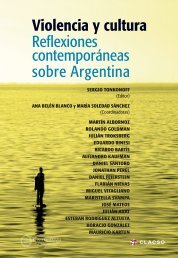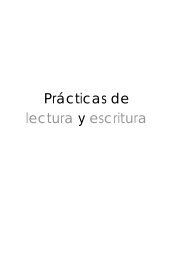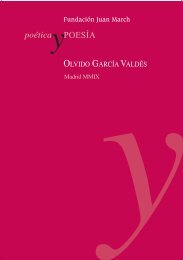blueprints
blueprints
blueprints
You also want an ePaper? Increase the reach of your titles
YUMPU automatically turns print PDFs into web optimized ePapers that Google loves.
158 | alison hawthorne deming<br />
If a place isn’t careful, it can become a caricature of itself, falling for a<br />
canned version of its history that leaves it bereft of whole categories of collective<br />
experience. Tucson as “Cow Town” and Santa Fe as “Pink Coyote<br />
Land.” A place can lose track of its story and so its future. This can happen<br />
to literary organizations, which can sprout up like field mushrooms in the<br />
rain and shrivel as quickly. In the twenty years I’ve lived in Tucson, I’ve seen<br />
dozens of journals, reading series, community workshops, and writers’<br />
groups form and dissolve. A few have sustained. This is not a surprise: artistic<br />
affiliation follows the patterns of growth, connection, and decay that<br />
cycle through nature and culture. Life spans vary; dynamism is all. Looking<br />
over the past fifty years of the Poetry Center’s history, I can’t help but marvel<br />
at its constancy through periods of institutional distraction, fiscal insecurity,<br />
aesthetic contentiousness, the tired jabs at “academic poets” (as if<br />
such a category could be defined and remain so from 1960 to 2010), the<br />
privatization of public education, and the call for arts audience development<br />
in the age of entertainment.<br />
What has carried us through all this weather, so that we begin our second<br />
fifty years standing in the breezeway of an artful new building that is<br />
the fulfillment of a long collective dream in this community, spawning a<br />
wealth of programs serving diverse audiences and building a living archive<br />
of poetry, photographs, and recordings of more than one thousand readings<br />
hosted by the Center since 1961? “Why here?” we ask, even those of us<br />
closest to the life of the Poetry Center, why here in the arid and malled<br />
landscape of desert and Sunbelt sprawl? What key values shaped the Center<br />
and might serve others who wish to create something in their own communities<br />
that says poetry matters?<br />
The Poetry Center was established on an aesthetic idea passionately<br />
held by founder, poet, novelist, and editor Ruth Walgreen Stephan—“to<br />
maintain and cherish the spirit of poetry.” When she spoke of the spirit of<br />
poetry, she meant not the art’s ethereal aspect that “makes nothing happen”<br />
but rather the animating force that lends strength and purpose to individuals<br />
and movements. “Poetry,” she wrote, “is the food of the spirit, and spirit<br />
is the instigator and flow of all revolutions, whether political or personal,<br />
whether national, worldwide, or within the life of a single quiet human<br />
being.” She spent winters in the 1950s writing in a rented cottage near the<br />
university campus. In 1960, she bought this cottage and an adjoining lot,<br />
donating them on the same day to the university to launch the Poetry Center.<br />
In her Connecticut home, she had a small poetry room, and she noticed







